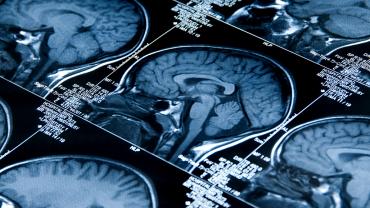
Alzheimer’s disease (AD) is the most prevalent neurodegenerative disease in the world. Its prevalence is expected to triple by 2050. AD is an age-related condition involving a progressive loss of cognitive function and memory.
The underlying pathophysiology of AD is still not fully understood; however, AD has some hallmark features. These features include neuroinflammation, amyloid plaque accumulation, impaired glucose metabolism, and neuronal cell death. Preclinical and clinical studies indicate that certain lifestyle and dietary interventions may support the prevention or progression of certain AD-related changes.
A recently published review by Maccioni and colleagues explored the potential efficacy of certain botanicals and nutrients in the prevention of AD. One nutraceutical was quercetin, a flavonoid abundant in onions, apples, green tea, and other fruits and vegetables. Quercetin has been shown in studies to support the body’s response to oxidative stress and protect against damage caused by certain neurotoxic agents. Laboratory studies showed improvements in cellular damage and death caused by hydrogen peroxide and amyloid beta. The accumulation of amyloid-beta in the brain is associated with AD.
Quercetin plays many other health-supportive roles. It may protect neurons against damage caused by metal toxicity. Quercetin has been shown to modulate enzymatic systems associated with detoxification and may also influence pathways related to cognition, neurogenesis, and neuronal survival. It may also help inhibit the formation of amyloid beta proteins and eliminate senescent cells (SCs), which are cells that have undergone irreversible damage and can become harmful to the body. SCs have been associated with AD.
Anthocyanins are bioactive compounds found primarily in dark berries also highlighted in the article by Macconi and colleagues. Studies involving the intake of berries or berry extracts suggest their potential protective effects against AD. Anthocyanins are believed to support brain health through their influence on the body’s response to oxidative stress and neuroinflammation. They may also support signaling pathways related to protection against brain changes associated with AD. A clinical study showed significant increases in brain activity in areas associated with cognition when blueberry extract supplementation was administered to healthy older adults.
Other compounds discussed in the article by Maccioni and colleagues included the polyphenols present in honey. Luteolin is a bioactive compound found in honey that may support the body’s response to neuronal cell death associated with the induction of microglia. It was shown in animal studies to help improve spatial working memory in aged rats with neuroinflammation.
Several other compounds were also discussed in the same article, including garlic extract and certain prebiotics and probiotics. The authors conclude that certain bioactive compounds may support the body’s response to neuroinflammation and other changes related to reducing the risk of developing AD.
By Colleen Ambrose, ND, MAT